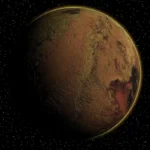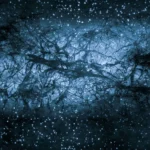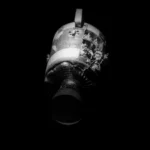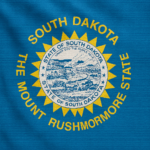
Mimas, Saturn’s smallest major moon, has captured the curiosity of astronomers and space enthusiasts alike with its intriguing features and celestial significance. From its striking resemblance to the Death Star of Star Wars fame to its heavily cratered surface and potential for harboring subsurface oceans, Mimas offers a window into the mysteries of our solar system. Join us as we embark on a journey to explore the enigmatic world of Mimas and unravel the secrets hidden within its icy embrace.
Mimas, the smallest and innermost major moon of Saturn, earned its nickname “Death Star” due to its striking resemblance to the fictional space station from Star Wars. With an average diameter of 396 kilometers (246 miles), Mimas is relatively small compared to other moons in the Saturnian system. Its surface is heavily cratered, giving it a rugged appearance reminiscent of the Death Star’s surface. This nickname highlights the visual similarity between the moon and the iconic Star Wars space station, capturing the imagination of space enthusiasts and adding a pop culture reference to the realm of astronomy.
Mimas, despite its diminutive size, boasts a diameter comparable to that of the dwarf planet Eris, which also resides within our solar system. Eris, discovered in 2005, is located in the scattered disc, a region beyond the orbit of Neptune. The similarity in size between Mimas and Eris underscores the diversity of celestial bodies within our solar system, ranging from small moons to dwarf planets, each with its own unique characteristics and orbital dynamics.
The enormous Herschel crater dominates approximately one-third of Mimas’ surface, spanning an impressive 130 kilometers (81 miles) in diameter. Named after the astronomer William Herschel, who discovered Mimas in 1789, this crater is a prominent feature that shapes the moon’s appearance. The impact event that created the Herschel crater likely had a significant influence on Mimas’ geological evolution, leaving a lasting mark on its surface and providing valuable insights into the history of impacts within the Saturnian system.
The impact that formed the Herschel crater was so powerful that it nearly shattered Mimas, exerting forces capable of potentially creating a temporary ring system around Saturn. This remarkable event underscores the cataclysmic nature of impacts in the outer solar system and their profound effects on planetary moons. The formation of the Herschel crater serves as a testament to the dynamic processes shaping celestial bodies and highlights the role of impacts in sculpting the surfaces of moons and planets.
Mimas orbits Saturn at a distance of 185,539 kilometers (115,295 miles), completing a full revolution around the planet every 21.8 hours. This close proximity to Saturn places Mimas within the planet’s gravitational influence, leading to tidal locking, where the same side of the moon always faces the planet. The relatively short orbital period of Mimas underscores its proximity to Saturn and its role as an integral part of the Saturnian system’s dynamics.
The surface of Mimas is characterized by a heavily cratered terrain covered in a fine, icy dust, contributing to its bright and reflective appearance. These surface features, reminiscent of other icy moons in the outer solar system, indicate a history of intense bombardment by comets and asteroids. The icy composition of Mimas’ surface reflects sunlight, making it one of the brighter objects within the Saturnian system and facilitating observations by spacecraft such as Cassini.
Mimas is primarily composed of water ice, with a possible rocky core beneath its icy crust. This composition is typical of many moons in the outer solar system, where water ice dominates the surface and subsurface layers. The presence of a rocky core suggests a layered structure for Mimas, with a relatively low-density ice shell overlaying denser rocky material. Understanding the internal composition of Mimas provides valuable insights into its formation and evolution.
Scientists speculate that Mimas may harbor a subsurface ocean beneath its icy crust, potentially creating conditions suitable for microbial life. This hypothesis is based on observations of other icy moons in the outer solar system, such as Europa and Enceladus, which also exhibit evidence of subsurface oceans. The potential presence of liquid water beneath Mimas’ surface adds to its astrobiological significance, raising intriguing questions about the possibility of habitable environments beyond Earth.
The Cassini spacecraft, which orbited Saturn from 2004 to 2017, provided the most detailed observations of Mimas to date, revealing its heavily cratered surface and intriguing geological features. Cassini’s instruments, including cameras and spectrometers, captured high-resolution images and data that enabled scientists to study Mimas’ surface composition, topography, and geology in unprecedented detail. The insights gained from Cassini’s observations have greatly expanded our understanding of Mimas and its place within the Saturnian system.
Mimas was discovered in 1789 by William Herschel, the same astronomer who discovered Uranus. Herschel’s discovery of Mimas marked a significant milestone in the history of astronomy, as it was the first moon discovered orbiting a planet other than Earth. This discovery expanded our understanding of the diversity of celestial bodies within our solar system and paved the way for further exploration of the Saturnian moons. Herschel’s contributions to astronomy, including the discovery of both a planet and its moon, remain an enduring legacy in the field of planetary science.
Mimas is tidally locked with Saturn, meaning the same side always faces the planet, similar to how Pluto faces its moon Charon. This tidal locking results from the gravitational interactions between Mimas and Saturn, causing its rotational period to synchronize with its orbital period around the planet.
The faint rings of Saturn are believed to be partially composed of dust and debris ejected from Mimas and other moons through meteorite impacts. These impacts release material into space, some of which can become trapped in Saturn’s gravitational field, contributing to the formation of its ring system.
The average temperature on the surface of Mimas is estimated to be around -194 degrees Celsius (-317 degrees Fahrenheit). This frigid temperature is due to Mimas’ distance from the Sun and its low capacity to retain heat, resulting in extremely cold surface conditions.
Due to its small size and distance from the Sun, Mimas is unlikely to harbor any significant atmosphere. Without sufficient gravity to retain gases, any atmosphere that may have existed would have been lost to space over time, leaving Mimas with a thin or nonexistent atmosphere.
Mimas is one of many moons orbiting Saturn, with over 80 known moons in total, making it the solar system’s moon-richest planet. This abundance of moons reflects Saturn’s complex and dynamic moon system, which includes a diverse range of sizes, compositions, and orbital characteristics.
The discovery of Mimas marked a significant milestone in astronomy, as it was the first moon discovered to orbit a planet other than Earth. This breakthrough in celestial observation expanded humanity’s understanding of the solar system and paved the way for the discovery of numerous other moons around gas giants and terrestrial planets alike.
The name Mimas comes from Greek mythology, referencing the Gigantes, monstrous giants who fought against the Olympian gods. This mythological connection adds depth to our understanding of celestial bodies, intertwining scientific exploration with cultural heritage and storytelling.
Future missions to Saturn’s moon system may investigate Mimas in more detail, potentially searching for signs of subsurface oceans and any potential geological activity. These missions could involve orbiters, landers, or even sample return missions, aiming to unlock further secrets of Mimas’ enigmatic surface and interior.
The vast distance between Earth and Saturn makes studying Mimas a challenge, with spacecraft observations being the primary source of information. Despite these challenges, ongoing advancements in space exploration technology continue to enable scientists to gather valuable data about Mimas and other distant celestial bodies.
Despite its seemingly barren and cratered surface, Mimas holds a certain intrigue for scientists due to the possibility of a hidden ocean and its role within the Saturnian system. This intrigue fuels ongoing research and exploration efforts aimed at unraveling the mysteries of Mimas and understanding its significance in the broader context of planetary science.
The study of Mimas and other icy moons in our solar system can provide insights into the formation and evolution of planetary bodies and potentially the existence of extraterrestrial life. By studying the processes that shape these moons and examining their potential habitability, scientists can expand our understanding of the conditions necessary for life to emerge elsewhere in the universe.
Mimas is a reminder of the immense scale and diversity of objects within our solar system, each with its unique characteristics and scientific significance. Its existence highlights the rich tapestry of celestial bodies that populate our cosmic neighborhood, showcasing the variety of worlds waiting to be explored and understood.
Astronomers continue to analyze data collected by the Cassini mission and await future exploration missions to unlock more secrets about Mimas and other moons of Saturn. These ongoing efforts promise to deepen our understanding of Mimas’ geological history, internal structure, and potential for harboring habitable environments beneath its icy surface.
The existence of a moon like Mimas with a potentially hidden ocean highlights the possibility of undiscovered niches that could harbor life beyond Earth in our cosmic neighborhood. This realization fuels scientific curiosity and exploration, driving the search for extraterrestrial life in diverse environments throughout the solar system and beyond.
Mimas serves as a captivating example of how seemingly simple celestial bodies can hold hidden complexities and contribute to our understanding of planetary formation and the potential for life beyond our planet. Its unique characteristics and enigmatic features inspire further exploration and research, inviting humanity to delve deeper into the mysteries of the cosmos.
5 FAQs about Mimas:
Why is Mimas nicknamed the “Death Star” moon?
Mimas has earned this nickname due to its uncanny resemblance to the fictional space station, the Death Star, from the Star Wars franchise. The dominant feature on Mimas is the enormous Herschel crater, spanning roughly one-third of the moon’s diameter. This crater creates a large, singular dark spot that evokes the image of the Death Star’s powerful superlaser dish.
How big is Mimas compared to other celestial bodies?
Mimas is the smallest and innermost major moon of Saturn. With an average diameter of 396 kilometers (246 miles), it’s surprisingly small. For comparison, it’s roughly the size of the dwarf planet Eris and slightly smaller than the asteroid Vesta.
Does Mimas have any potential for life?
While the icy surface of Mimas appears barren and inhospitable, there’s a fascinating possibility beneath its crust. Scientists believe Mimas might harbor a subsurface ocean of liquid water. This hidden ocean, if it exists, could potentially provide conditions suitable for microbial life forms. However, due to the extreme coldness and pressure, any life would likely be very different from what we know on Earth.
What are some interesting features on Mimas?
The most striking feature on Mimas is undoubtedly the enormous Herschel crater. This colossal impact crater is estimated to be nearly half the diameter of the moon itself. The impact that created it is believed to have been so powerful that it nearly shattered Mimas, potentially even forming a temporary ring system around Saturn. Beyond the Herschel crater, Mimas’ surface is heavily cratered and covered in a fine, bright dust, likely due to past meteorite impacts.
How do we study Mimas?
Due to the vast distance between Earth and Saturn (over 1 billion kilometers at its farthest), studying Mimas poses a significant challenge. Our primary source of information comes from spacecraft observations. The Cassini spacecraft, which orbited Saturn from 2004 to 2017, provided the most detailed observations of Mimas to date, revealing its surface features and intriguing geological formations. Future missions to the Saturnian system may offer even closer looks at Mimas, potentially helping us understand its internal structure and the possibility of a subsurface ocean.









